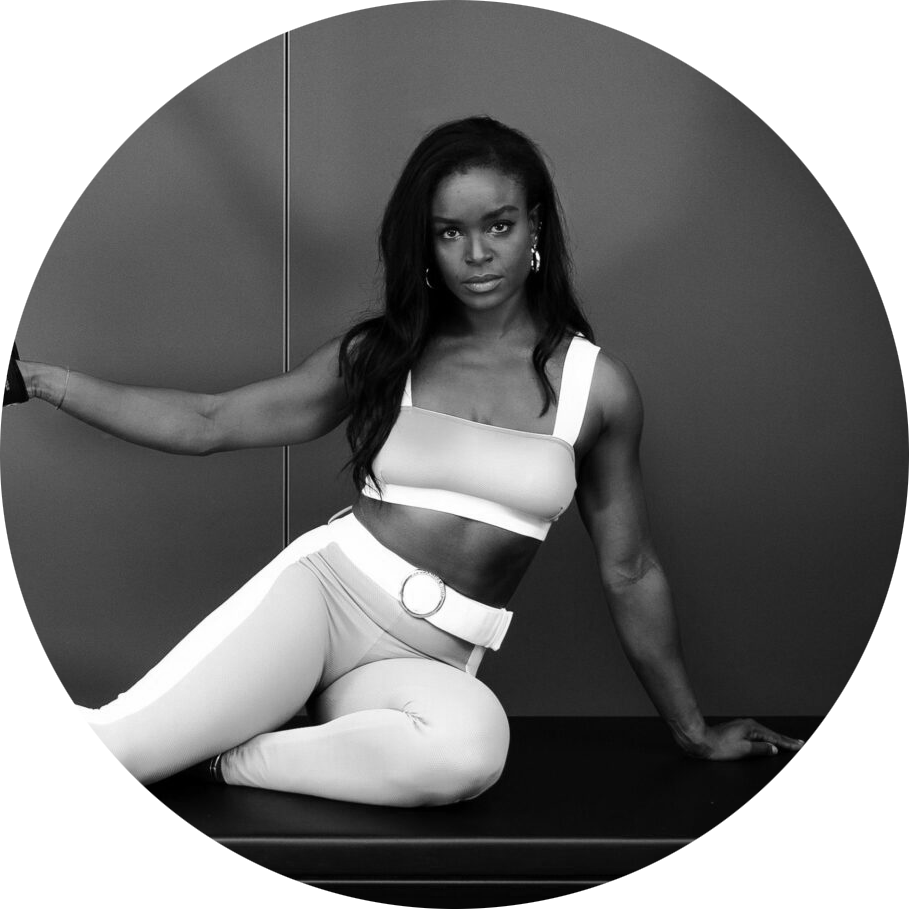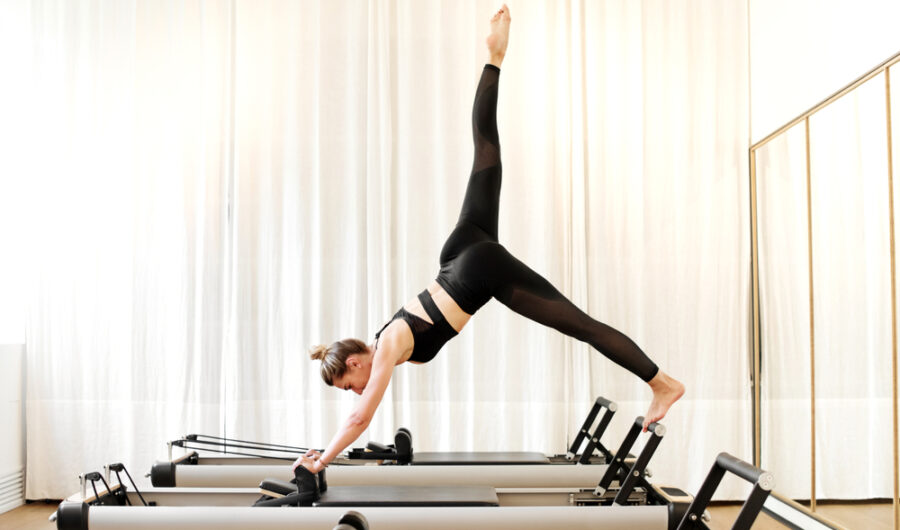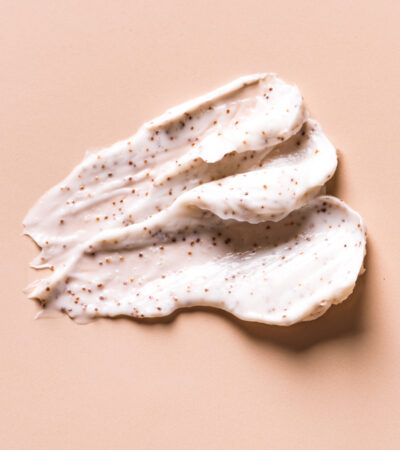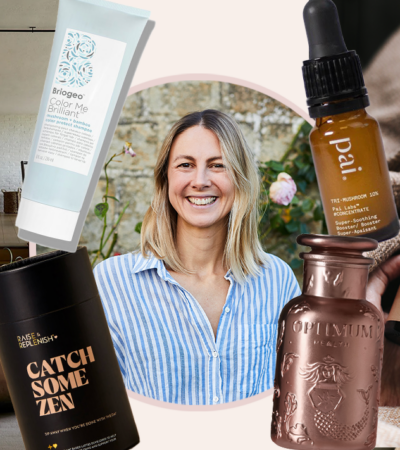The endless list of celebs that are hooked on Reformer Pilates has unravelled a cult workout that has swept the fitness industry… advocates include Harry Styles, Hailey Bieber, Adele and Kendall Jenner to name a few. Created by Joseph Pilates, the Reformer evolved as a way of helping wounded soldiers in World War 1 believe it or not. Attaching springs to beds enabled movement for the bedridden patients to rehabilitate and thus Reformer Pilates was born! Fast forward to 2023, the Reformer has been refined but the principles remain the same, facilitating flexibility, strengthening and lengthening. We got the inside scoop from the top Reformer Pilates experts to uncover their tips, from advice for first-timers, how it can help with injuries and what the magic formula is that makes it so effective (and addictive)!

Jessie Blum, Founder & CEO of Heartcore
How was Reformer Pilates brought about?
Developed by Joseph Pilates in the early 1920’s, Reformer Pilates challenges you using spring resistance, providing a more demanding strength and endurance workout. In 2010, I developed the Coreformer, an adaptation of the traditional reformer with the aim of creating an enhanced workout experience for every shape and body type: it moves very smoothly and quietly, is super comfortable and allows for a wide range of movement. We manufacture the Coreformer in small batches to ensure each piece is solid, and made with care, attention to detail and love. When the Press referred to it as the “Rolls Royce of Reformers”, it made my day.
What can newbies expect from a Reformer session?
At Heartcore, we are committed to bringing you a transformative mind-body workout every time you come to class. The Heartcore Method follows a certain flow which includes a variety of movements for a complete body workout, focusing on a larger range of motion and adding slightly more resistance than you may find in a traditional Pilates class. We push you past your perceived boundaries to experience new heights of your physical and mental capabilities – whether you’re training for your next ironman or are just starting out on your wellbeing journey. With the positive, welcoming and encouraging support from our teaching team, the sound of great tunes and a beautiful community of like-minded people, your energy shifts naturally to “yes, I can and yes, I will”. That, for us, is the power of positive movement.
So many rave about the unique benefits of Reformer Pilates, what makes it different to other forms of exercise?
Reformer Pilates works the entire body, using muscles you didn’t even know existed. The more controlled nature of movements activates our slow twitch muscle fibres which tend to make for a leaner physical appearance. And it is very core focused – initiating every move from our powerhouse with our breath. By being aware of our breath, we can deepen the connection between the mind and the body. We tap into each move and how it feels, working consciously into the full range of each motion, improving our strength, flexibility, coordination, balance and body awareness.
The burn from Reformer is pretty intense! Are there any tips you have to push through the burn?
Focus on your breathing, take it slowly, and reset when you need to. Our workouts challenge you to dig deep and use your mental resilience, making it a transformative mind-body workout. You learn a lot about yourself on the Coreformer, it takes you on a journey of strength and possibility – physically, mentally and emotionally.

Marsha Lindsay, Creative Director of Nobu Pilates
The Reformer itself can look quite daunting to those of haven’t used it before, what’s your advice for navigating your way around the kit?
I remember clearly the first time I saw the reformer and having the same feeling. Firstly, don’t try to figure it out by yourself. Have an experienced instructor to take you through the basics so you understand how to move and transition correctly. Secondly, it’s good to know from the beginning that springs are the best way to start your Pilates journey versus the mat work.
Certainly, starting any form of Pilates is going to be hugely beneficial to your body; practising both Mat and Equipment is important in the long run. However, I always encourage my first-time clients to immerse themselves into the reformer and apparatus to begin.
The springs are designed to build strength in the muscles, yet the resistance also provides support. The mat work can be the most challenging repertoire, as you are required to manage your bodyweight against gravity. The quickest progression is to use the spring work to understand how to recruit the correct connections, then challenge the body by taking the spring support away and seeing if you can achieve the movement independently. This being said, I’m not saying the reformer and equipment are easy!
What are the things to note when starting Reformer? (ie breathing techniques, slowing down the movement, core engagement)
It’s good to know that when creating the method, Joseph Pilates listed his 6 key principles to be Breathing, Concentration, Control, Precision, Centring and Flow. Working on using all 6 principles will massively improve your practice.
In our classes, we commit to honouring and delivering on all these themes to empower clients to be the master of their own bodies. With this knowledge and ability to move mindfully, it can be applied in all forms of workout to propel our client’s progress in any activity they do; whether in professional sport, recovering from injury or staying mobile for life.
Another component is understanding how to recruit the abdominals correctly. When asked to ‘switch on’ their abdominals, most new Pilates clients will tense, harden, and push their abdominal muscles, as if they are bracing.
In Pilates, we want to learn about using the lower abdominal muscles in all the movements providing greater support, connection, and strength. Your Pilates instructor will coach you through the correct way to scoop the lower abdominals ‘in and up’.
Lastly, understanding that moving with the flow doesn’t necessarily mean rushing or using momentum. Moving through the exercises too quickly can affect form and create tension in the wrong muscle groups. Pilates is all about quality over quantity; ten repetitions with incorrect placement is a much greater value than twenty faster with incorrect form.
How many times a week would you recommend doing classes to get results?
I recommend 3 sessions per week to fully appreciate the benefits of Pilates. The most famous Joseph Pilates quote is “In 10 sessions you’ll feel the difference, in 20 sessions you’ll see the difference, and in 30 sessions you’ll have a whole new body”.
Most of us must battle numerous challenges whether trying to build strength in a certain muscle group to progress, rehabilitating an injury, or simply facing daily postural challenges in modern life. After doing one Pilates session, clients immediately feel great. However, they go back to their desks or resort to poor form which reverses the process. One session per week doesn’t cut it. Like anything worth doing, Pilates requires commitment and consistency to achieve long lasting strength and conditioning. The upside is once you start becoming accustomed to the movements, your muscle memory kicks in, and it becomes easier to maintain. It’s also super fun and addictive so why not add it to your weekly routine!
Reformer Pilates is renowned for its aesthetic appeal, what can you expect if you practise regularly?
It certainly is! The regular Pilates goer will develop great muscle tone and much better posture, allowing them to stand taller and straighter. The external results are a bonus.
What’s going on internally is just as important to highlight. Pilates is a full-body workout that promises to deliver the ultimate blend of strength, stability, and flexibility. Every session you will learn how to connect with deeper muscle groups to find balance in the body. It also brings awareness to better posture by taking a 360 view of your body’s alignment.

Matt Newman, Senior Trainer at Ten Health Fitness
Internally how does Reformer work the muscles?
Reformer Pilates allows the body to move through a full range of motion while using springs to load the muscles. Loading the muscles, and taking them to the point of fatigue, causes muscles to get stronger and more durable. Working the body through a full range of motion also helps to develop your flexibility, allowing your limbs and joints to be strong yet supple. Controlled strength training, like Reformer Pilates, is one of the most important things you can do to improve your physical health. Reformer Pilates is also well renowned for including many different exercises targeted at challenging the ‘core’. The core is sometimes a bit of a mystical term, but it essentially defines an interconnected group of the back, hip, and abdominal muscles (not just your stomach muscles, contrary to popular belief). Working on core strength has numerous benefits, like increasing athletic performance, improving coordination and balance, and reducing the risk of injury.
Who is Reformer Pilates suitable for?
Reformer Pilates can be suitable for everyone, of all ages, genders and fitness levels. Reformer Pilates is an effective form of low-impact resistance exercise, using a variety of springs to alter the tension and load of the movement. Because of this, Reformer Pilates is a very versatile form of exercise. With the wide and diverse selection of movements that are possible on a Reformer machine, sessions can be adapted to meet a wide variety of needs – whether that’s to create a very demanding workout for people who want to improve their fitness or to support those who are looking to rehabilitate an injury, or long-standing joint/muscular pain.
If you’re unsure whether Reformer Pilates is suitable for you, the best thing to do is speak to a qualified instructor, they can guide you towards the most suitable movements and level for you.
How does Reformer compliant other forms of exercise?
Due to the variety and range of movements, you can complete on a Reformer machine, Reformer Pilates can complement many other forms of exercise. If running is your thing, or you’re training for a marathon, Reformer Pilates can help develop the strength of your lower limbs. It can also strengthen the supporting muscles around the ankle, knee and hip joints, reducing your risk of injury.
If weight training is your exercise fix, then you can use Reformer Pilates to increase your strength and mobility in a greater range of motion, helping you improve your depth and form. Reformer Pilates can also help performance in exercise involving hand-eye coordination like netball, football, tennis and golf by improving balance and coordination, as well as developing your core strength.
Something important to note when pairing different forms of exercise together in a weekly programme is exercise intensity, rest and recovery. Reformer Pilates can be used as an intense workout, or as active recovery, depending on what class type you pick. The variety of Reformer Pilates is what makes it truly amazing.
How can Reformer help with ailments in the body such as joint pain?
Exercise has been proven to improve outcomes and help manage many different forms of clinical diagnosis; including cancer, heart disease, diabetes, menopause, and musculoskeletal conditions amongst them.
According to a recent study, One in five people consults a GP about a musculoskeletal problem every year, with current estimates saying over 30% of people in the UK live with a musculoskeletal condition, such as joint problems or low back pain. Whilst low back pain can have many potential causes, where even sometimes the cause of the pain is unknown, it is well evidenced that regular physical activity can help relieve low back pain. Reformer Pilates helps strengthen the core muscles (back, hip, and abdominals) through multiple different directions and movements, which can contribute to reducing low back pain.
When looking at joint injuries and joint pain, like shoulder pain, the main aims of rehabilitation are to increase strength, endurance, stability and range of motion around the joint, alongside pain management. Reformer Pilates is proven to strengthen muscles and improve muscular endurance, using spring resistance to challenge and fatigue muscles. Also, a key component of Reformer Pilates is exercising across a full range of motion, helping gradually restore mobility around the affected joint.
As well as building physical health, another important element of Reformer Pilates, and of all exercise, is improved mental health. Exercise helps release endorphins, reduce anxiety, and improve the understanding of physical outcomes, as well as the social interactions that people experience within Reformer Pilates classes and the wider Pilates community.
Whilst Reformer Pilates is perfectly safe and very beneficial, If you currently have a clinical diagnosis, it is always best to consult a medical professional before you start with any exercise programme.
CLASSES TO TRY:
Heartcore, Various Locations
Nobu Pilates, Marylebone
TEN Health & Fitness, Various Locations
Karve, Kensington
Core LDN, Sheen
Psycle, Oxford Circus
Exhale Pilates, Primrose Hill & North Finchley
Anthro-Contrology, Richmond














